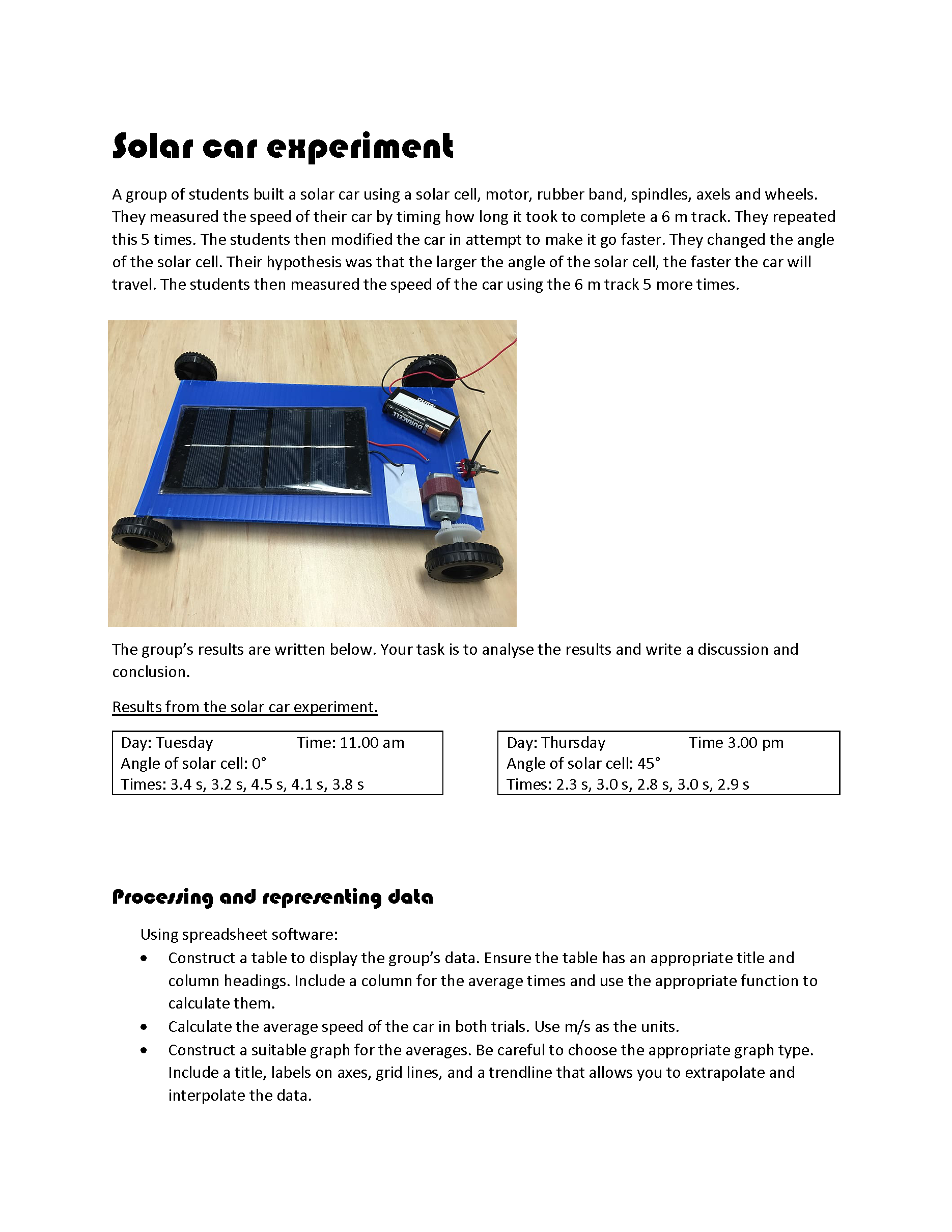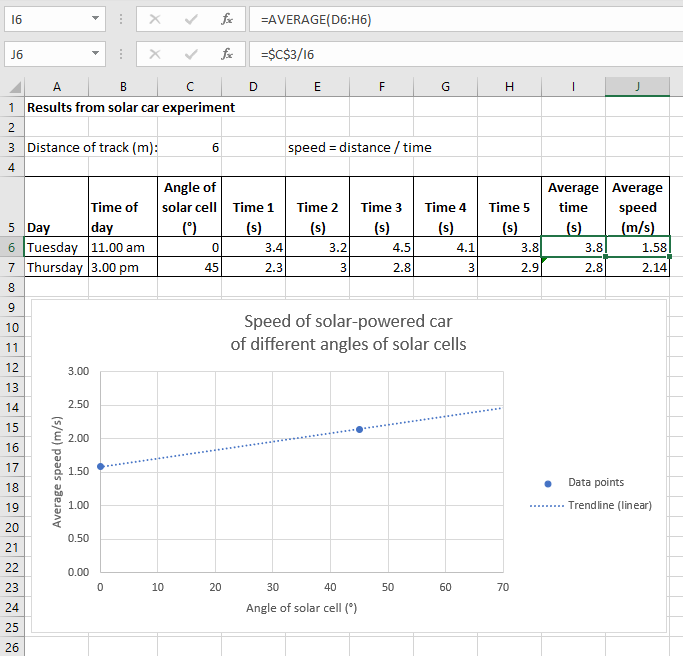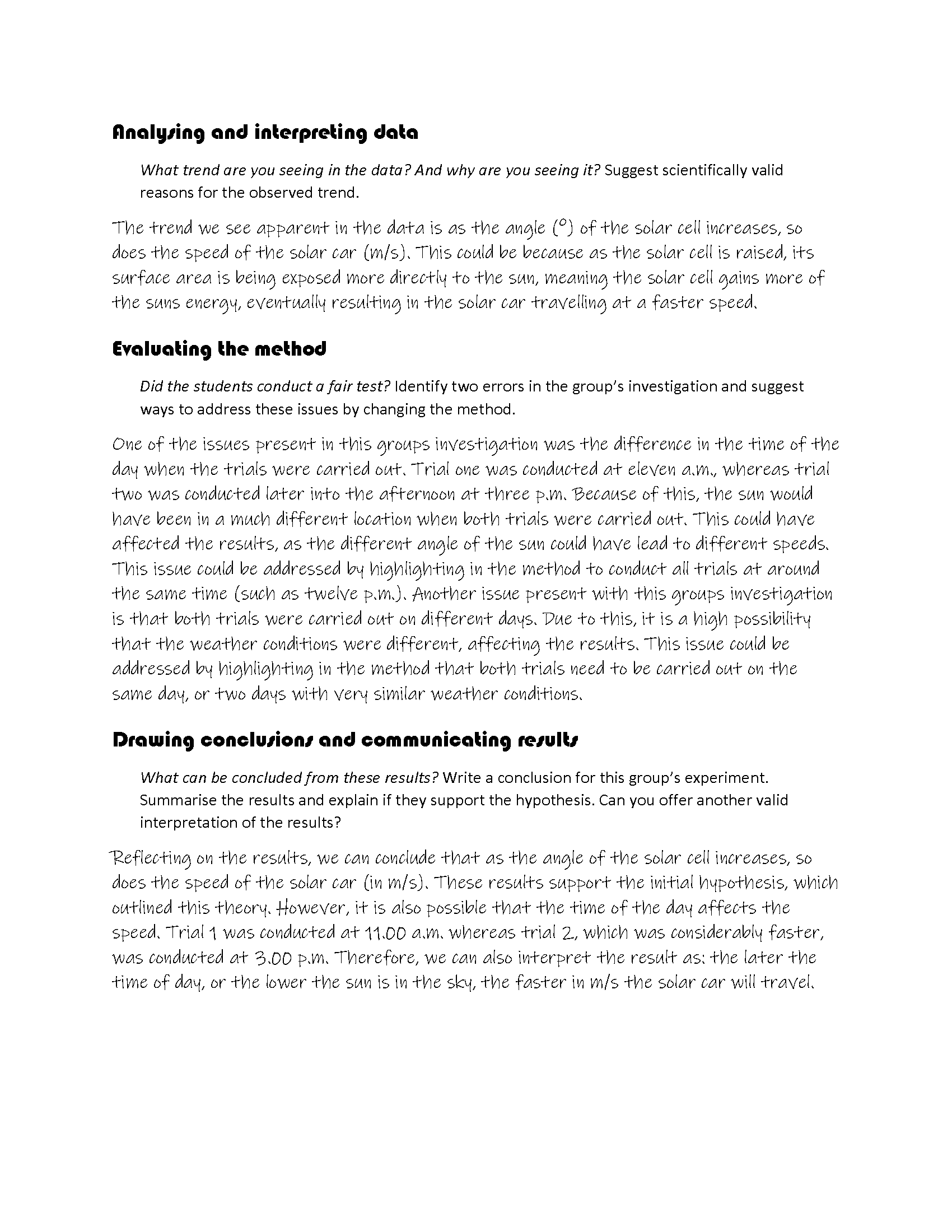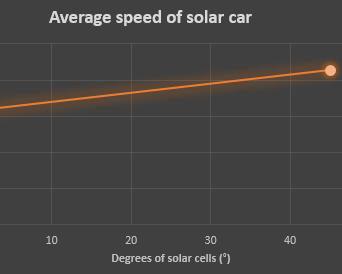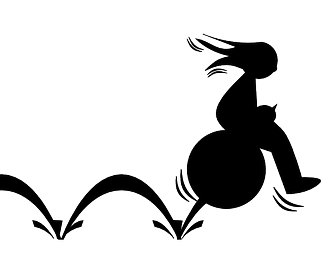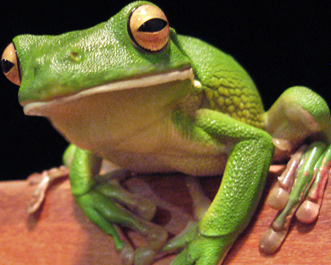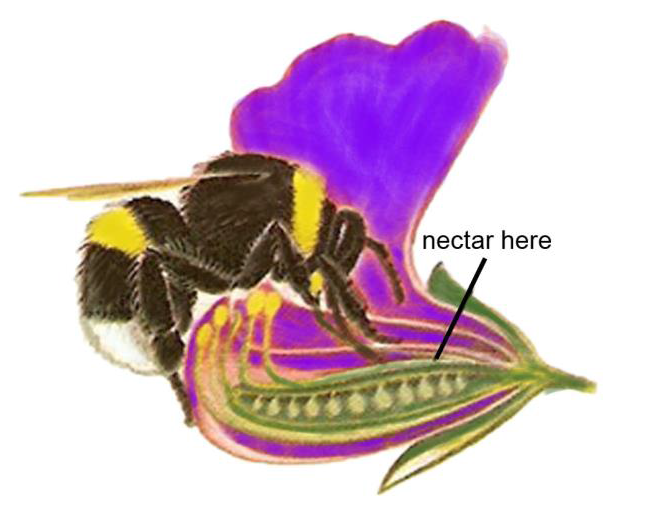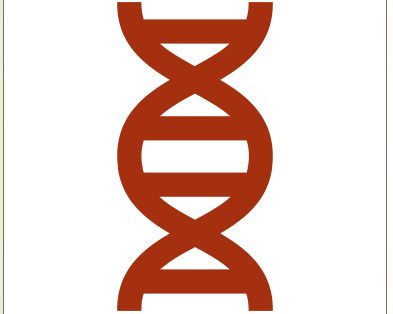Solar car experiment
Summary of task
As part of an integrated STEM project, students had previously designed and built a solar-powered toy car and they used this to investigate the transformation of light energy into electrical and kinetic energy. Students designed and performed an experiment to determine how the angle of the car’s solar panel, relative to the direction of incident radiation, affects the speed of the toy car. Students were explicitly taught how to use spreadsheet software to process and analyse data and represent their results in tabular and graphic form.
In this task, students were presented with data from a similar hypothetical investigation. They were asked to process the data and create a graph of the results using spreadsheet software, analyse and discuss trends, evaluate the method used, and write a conclusion with reference to the stated hypothesis.
This task was given as a class activity to give students an opportunity to practice their skills in processing and representing data using digital technologies, consolidate their understanding of energy transformations in the context of solar cells, and challenge their ability to critically evaluate methods and conclusions of scientific investigations made by others.
